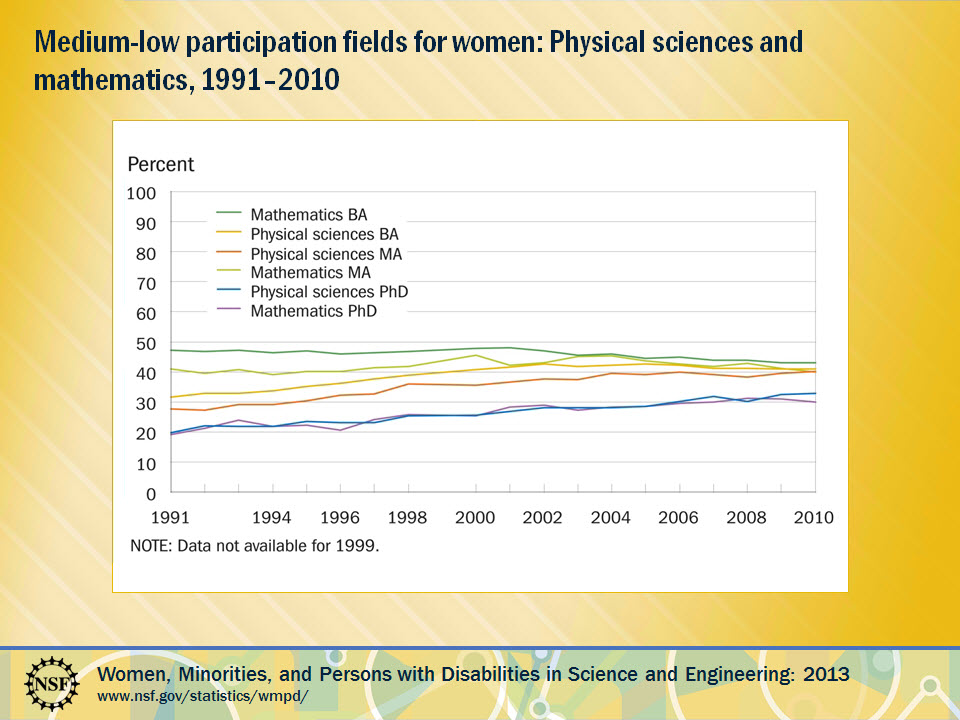When Elise Andrew, the
creator of the phenomenally popular social media site I
F***ing Love Science, shared her personal Twitter account in 2013
with the site's fans, she said the Internet “lost its mind.”
At first, the influx of
comments might have seemed benign enough. People commented that they
were surprised she was female; some added they also thought she was
attractive.
Nevertheless, Andrew felt
uncomfortable with this deluge of
benevolent sexism. “EVERY COMMENT is about how shocking it is
that I’m a woman! Is this really 2013?” she tweeted in response.
Then the news media got
involved. “I was trying to bury my head in the sand, hoping it
would go away,” said Andrew.
But it didn't. Pointing
out the sexism inherent in the comments made things worse. People
became hostile. At one point, someone set up a Facebook page with
Andrew's face photoshopped onto soft-core porn.
Andrew told her story as
part of a panel with five other women who shared their experiences
and insights into the persistence of gender bias in the science
community April 12 at the Northeast
Conference on Science and Skepticism in Manhattan.

Image courtesy of the National Science Foundation.
The rest of the panel was
rounded out by NASA astronaut Cady Coleman; neuroscientist Heather
Berlin; Latasha Wright, Director of Development and Staff Scientist
for BioBus; physicist Deborah
Berebichez; and moderator Jeanne Garbarino, Director of Science
Outreach at Rockefeller University.
Though Andrew hasn't ended
her social media activities, she told the audience the experience has
given her second thoughts about how much she puts herself in the
public eye.
Coleman, for her part,
said she hasn't experienced anything as extreme. “There's something
about being an astronaut and going to space that makes people be nice
to you,” she joked.
Nevertheless, said
Coleman, she's noticed an insidious tendency for people to
differentiate her from her colleagues by her gender.
She made an analogy to
being a marathon runner: if you look like what people expect, they
say "Go! Go!" But if you don't look like what they expect,
they say, "Wow, a marathon. How is that for you?”
All the panelists
acknowledged that women have more opportunities than in the past to
pursue the careers and projects they want. But they also agreed that
sexism in science remains entrenched in stubbornly subtle (and
occasionally overt) ways.
Berebichez, for instance,
had noticed that every textbook she came across was written by old,
white men. The examples provided in the textbooks rarely reflected
girls' experiences. So she said she put together a proposal for a
book written for a girl's perspective and shopped it around.
Uniformly she was told girls wouldn't buy it.
Berlin noted that there
are several well-understood unconscious biases at work that continue
to undermine women. One is psychological
priming, exemplified by studies demonstrating that telling a
group before a test that girls generally perform worse would lead to
lowered scores among the females. She pointed out that numerous
experiments have revealed unconscious biases against women – biases
held by males and females alike.
Berlin suggested that
having women in visible scientific positions could erode some of the
danger of stereotypes over the long run.
However, she cautioned, it
was important not to conflate the need for equality with an
assumption of similarity. “It's okay to say that there are
differences. There are differences between men and women.”
Berebichez added to
Berlin's thought, noting that the relatively
high number of women in the life sciences compared to other
fields could be the result of selection bias – that is, more women
might just be drawn to those areas. “We have to not just look at
the absolute numbers,” she said, “but also the numbers relative
to what women want.”
What if those differences
between men and women and what women want are products of
socialization well before adulthood, though? Wright said that in her
own experience working with children, she's seen the effects of early
gender differentiation. When kids start out in school, she said, the
boys and girls would be split into two lines by gender. At first,
both groups would be prone to pushing one another and playing around.
By third grade, however, there was a big shift, with the girls being
much more compliant.
Wright advocated for more
intervention early on. “We have to educate girls to take more
risks, as many as boys,” she said.
The panelists
agreed that gender biases would continue to pervade the science
community unless women – and men – actively combat them. However
that's accomplished, Garbarino said the eventual goal should be to
establish the perception that having women in science is normal.
“Just because we’re
women doing science,” she said, “doesn’t mean we’re special.”


